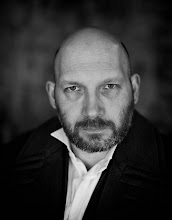
A short story of mine - The Dark Blessing - is due to appear in the very fine ezine Silver Blade at the end of this month, and, in addition Beneath Ceaseless Skies has chosen another of my short pieces - The Bone House - for an Audio Fiction Podcast. And... my short story What Dread Words has been chosen by Carol Hightshoe to appear in Arcane Whispers 2: The Best of Sorcerous Signals.
All of these things make me rather happy, so what better time to indulge in a little more shameless self promotion?
For all those who might find themselves interested, my various bits and pieces of fiction can be found at the following locations (some right now, some later in the year)
Skin-Tight
Emerald Eye, The Best Irish Imaginative Fiction
http://www.albedo1.com/
Yesterday Today Tomorrow: A Fable
Everyday Fiction
http://www.everydayfiction.com/yesterday-today-tomorrow-a-fable-by-james-lecky/
The Song The Soldiers Sang: A Fable
Everyday Fiction
http://www.everydayfiction.com/the-song-the-soldiers-sang-a-fable-by-james-lecky/
Deepest Black
Jupiter SF
http://www.jupitersf.co.uk/index.htm
The Substance of A Dream
Mirror Dance
http://mirrordancefantasy.blogspot.com/2008/03/substance-of-dream.html
The Fearsome Knight and the Little Dragon: A Fairytale
Mirror Dance
http://mirrordancefantasy.blogspot.com/2008/11/fearsome-knight-and-little-dragon.html
The Season Without Sun
Aphelion
http://www.aphelion-webzine.com/shorts/2008/08/TheSeasonWithoutSun.html
What Dread Words
Sorcerous Signals
http://www.sorceroussignals.com/WhatDreadWords.html
The Iron Morning In The Metallic Sunrise
The Nautilus Engine
http://rnwrrn.googlepages.com/ironmorning
The Glass Cage
Aphelion
http://www.aphelion-webzine.com/shorts/2009/02/TheGlassCage.html
Skin-Tight
Emerald Eye, The Best Irish Imaginative Fiction
http://www.albedo1.com/
Yesterday Today Tomorrow: A Fable
Everyday Fiction
http://www.everydayfiction.com/yesterday-today-tomorrow-a-fable-by-james-lecky/
The Song The Soldiers Sang: A Fable
Everyday Fiction
http://www.everydayfiction.com/the-song-the-soldiers-sang-a-fable-by-james-lecky/
Deepest Black
Jupiter SF
http://www.jupitersf.co.uk/index.htm
The Substance of A Dream
Mirror Dance
http://mirrordancefantasy.blogspot.com/2008/03/substance-of-dream.html
The Fearsome Knight and the Little Dragon: A Fairytale
Mirror Dance
http://mirrordancefantasy.blogspot.com/2008/11/fearsome-knight-and-little-dragon.html
The Season Without Sun
Aphelion
http://www.aphelion-webzine.com/shorts/2008/08/TheSeasonWithoutSun.html
What Dread Words
Sorcerous Signals
http://www.sorceroussignals.com/WhatDreadWords.html
The Iron Morning In The Metallic Sunrise
The Nautilus Engine
http://rnwrrn.googlepages.com/ironmorning
The Glass Cage
Aphelion
http://www.aphelion-webzine.com/shorts/2009/02/TheGlassCage.html
The Dark Blessing
Silver Blade
http://www.silverblade.net/issue3/shortstories7.html
Coming Soon:
The Children of Badb Catha
The Phantom Queen Awakes, Morrigan Books
http://www.morriganbooks.com/
The Bone House
Beneath Ceaseless Skies (scheduled for July 2009)
http://www.beneath-ceaseless-skies.com/
All That Grows
The Absent Willow Review (June 2009 issue)
http://absentwillowreview.com/
Coming Soon:
The Children of Badb Catha
The Phantom Queen Awakes, Morrigan Books
http://www.morriganbooks.com/
The Bone House
Beneath Ceaseless Skies (scheduled for July 2009)
http://www.beneath-ceaseless-skies.com/
All That Grows
The Absent Willow Review (June 2009 issue)
http://absentwillowreview.com/
The Sins of the Land
Dark Fire (June 2009 issue)



